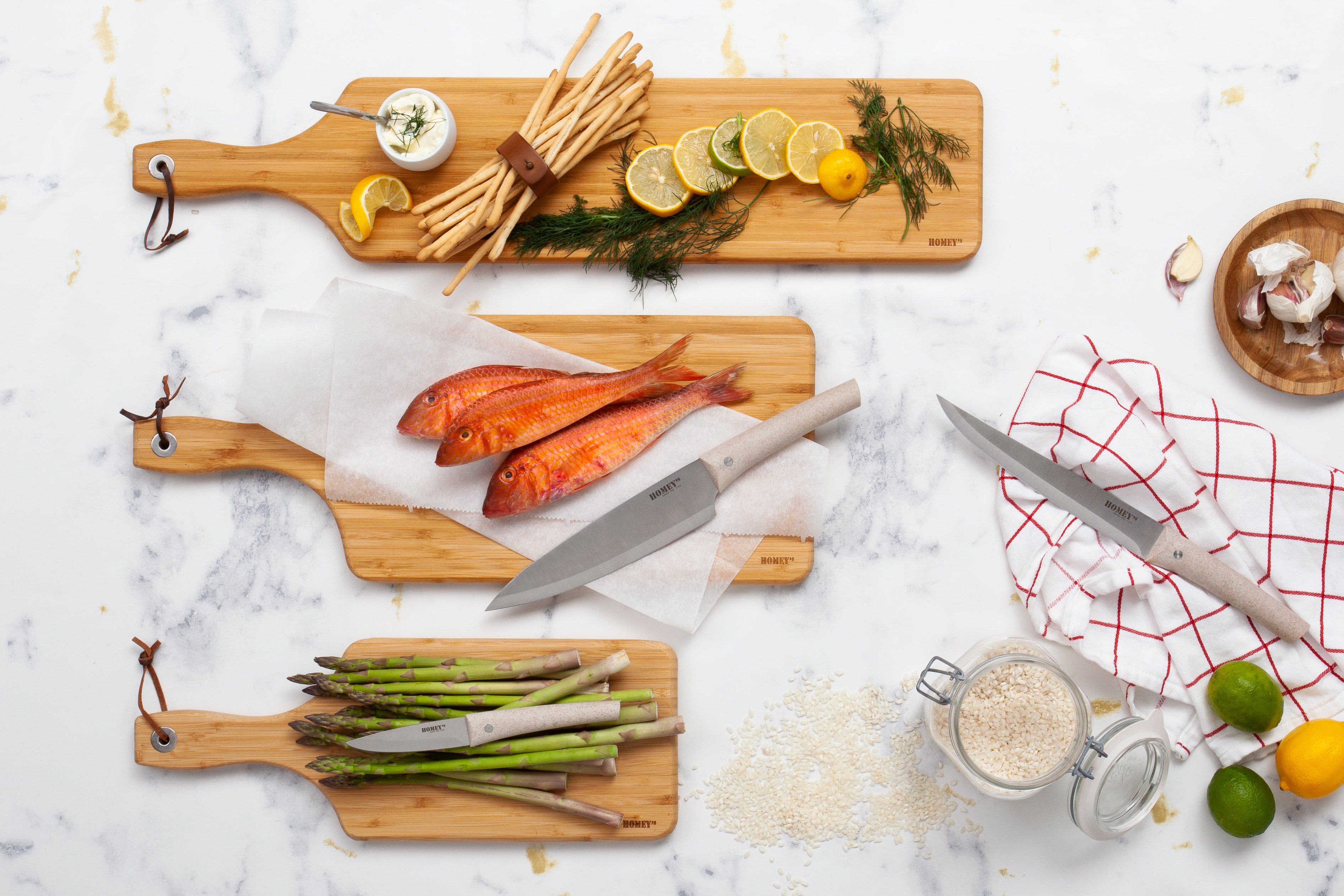Posted by Samantha on 5th Jan 2021
How to take care of a wooden cutting board
Taking good care of your kitchen utensils is very important if you wish to extend their lifespan. Especially when it comes to wooden stuff, it’s important to collect some know-how about the specific materials and how to maintain them.
Have you ever owned a stylish wooden cutting board? Probably not, because you were presumably too scared to screw it up. We’ve got your back! The most important tip in advance: Do. Not. Put. A. Wooden. Cutting. Board. In. The. Dishwasher! Do we need to add anything to this? It’s as easy as that. Just don’t do it. The heat and water will warp and splinter the wood plus void warranties from most manufacturers. Only plastic, composite, or glass boards can go into the dishwasher.
Alright, let’s hit it off! Here’s our view on wood as a material for cutting boards and how to take care of it.
Wood: a natural product
Wood is a natural product. This means that wood turned into a cutting board is still in a way “alive”. The wood reacts, shrinks, and expands related to changes in temperature and humidity. Because of this, wood can crack and gaps can occur. These gaps can easily turn into bacteria hotspots and that’s what you surely don’t want in a cutting board.
What’s more hygienic?
Often people see wood as an unhygienic material for a cutting board. Nothing could be further from the truth! The grooves you make while cutting will become a place for tiny bits of leftover foods to gather. With a plastic surface, the plastic will wrap itself around the tiny leftovers. You won’t be able to entirely wash everything off when cleaning a plastic cutting board. If you’re using a wooden cutting board instead, the gaps will remain open. This ensures you to be able to wash the bacteria away! On top of that, the tannin that wood contains will kill a big part of the bacteria.
How to look after it
Straight after use
Directly after you’ve used a wooden cutting board, it is best to rinse it and wipe it with a dishwasher brush or a cloth. You don't always have to use dish soap, however, we strongly advise it after cutting raw meat, poultry or fish. Make sure you dry the board very well, putting it away wet will usually still cause the wood to work. After drying it, preferably store it upright. The grain of the wood must be standing vertically. This greatly reduces the chances of warping. And again: NEVER put a wooden cutting board in the dishwasher.
Oiling: why?
Besides cleaning it, it’s also important to keep the wood of your cutting board in top-notch condition. A bit of oil goes a long way. If the wood is saturated with oil, it closes and forms a protective layer on the wood. For oiling a wooden cutting board is best to use an odor- and flavorless oil. Almond or grapeseed oil are good choices. (Note: don’t use almond oil if you’re allergic to nuts!) White mineral oil is also suitable, but we recommend using special cutting board oil. Do not use olive oil because this will become sticky and gross and that’s not what you want!
Oiling: how?
When you’re going to oil the wood, step one is to clean the board. First, rub the board with lemon juice or white vinegar. Sprinkle (sea)salt on top and take a paper towel or a clean dishcloth. Rub the salt and the juice or vinegar over the shelf and leave it to soak for 15 minutes. This makes the cutting board squeaky clean. Rinse it all off and dry it with a clean cloth or paper towel. The board must be well dried before oiling. The oil will be absorbed better that way.
The cutting board is ready to be oiled! Sprinkle a fair amount of the oil of choice on the shelf and rub it in with a paper towel or a clean dishcloth. Give the board plenty of time to absorb the oil before you use it again. Repeat the oiling after the rest time, keep going until the board no longer absorbs oil. This means that the board is “fed up” with oil. Leave it to rest before use!
Expanding the lifespan
If your wooden cutting board is dear to you, we suggest you take care of it as stated above every 2 to 4 months. In between, you can just oil the board after washing and drying it as you do after daily use. Depending on your frequency of use, we advise doing this every other week or once a month. When the cutting board starts feeling dried out, it’s time to oil again!



